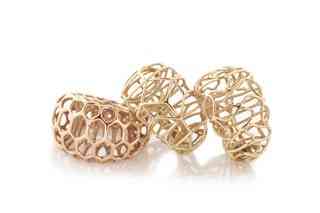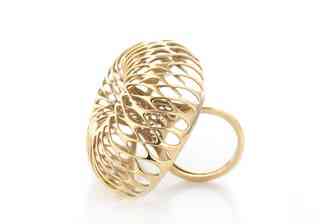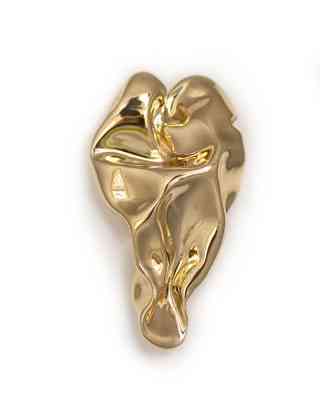
What if you had a fight with your partner and needed to make it up to them quickly with a piece of custom jewelry? That’s one of the scenarios in favor of 3-D printing jewelry suggested by Jan Willem Gunnink, manager of collaborative research and innovation projects at Delcam , which provides software to the manufacturing industry. Now that technological advances have made it possible to directly print jewelry made from precious metals, that could soon be an option.

Delcam is part of the Precious Project, a consortium that’s exploring how 3-D printing could make the U.K.’s jewelry industry more competitive. Another partner is Cooksongold, which worked with 3-D printer manufacturer EOS to develop the Precious M 080, a machine for the jewelry and watchmaking industry that produces metal parts from 3-D designs.
3-D printing jewelry is not an entirely seamless process, though—at least not yet. For example, a designer might submit a design that can’t be printed as is, so it needs to be adapted. “You can’t just print anything,” Gunnink says. And once a design is agreed on and produced, it still needs to be professionally polished and finished.

The Precious Project has gotten a positive response so far, but there are challenges. One of the biggest roadblocks to adopting the technology is the price: Right now 3-D printers for precious metals cost more than $300,000. Beyond that, companies also need to redefine their way of working. “People are always skeptical of new technology, and that’s not specific to the jewelry industry,” Gunnink says. “They think, ‘We’ve done it this way for 500 years, so why should we change it?’”
The appeal of 3-D printing jewelry lies in the ability to produce unique pieces, and quickly, he says. For example, the Precious Project produced a bangle by Lionel T. Dean that incorporates mini-reproductions of family heirlooms. “The concept is fantastic,” Gunnink says. “You’re building a new piece around an old piece.” Another piece by Dean, called HeartBeat, requires customers to bang on a sheet-metal heart with a hammer to create a one-of-a-kind shape, which is then scanned and printed as a pendant.
Given that everything from sneakers to smartphone cases is customizable now, it’s hard to imagine that the exclusivity of personalization and the cachet of 3-D printing won’t be a draw. Especially if you have to make it up to your partner with a very special gift.
